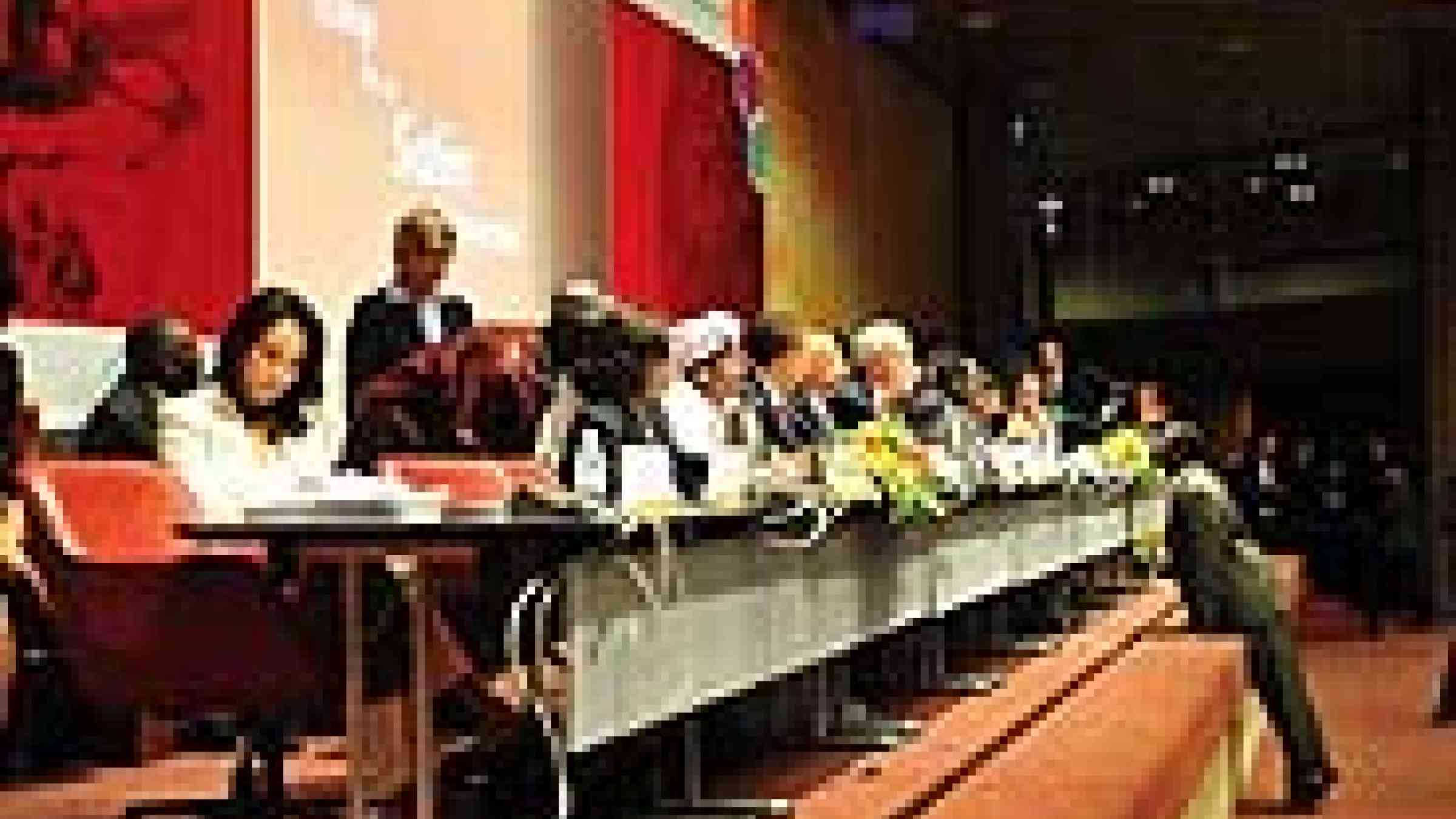Risk reduction conference ends with call to halve disaster related deaths by 2015

The Global Platform ended today with participants from more than 300 regional/national organizations and governments urging political leaders to implement measures to halve the number of deaths from natural hazards by 2015.
In the Chair’s Summary at the close of the Second Session of the Global Platform for Disaster Risk Reduction, John Holmes, UN Under-Secretary-General for Humanitarian Affairs and Chair of the ISDR partnership recognised the way in which the process of DRR was being driven from the local level with the leadership increasingly coming from the global south.
Specific targets were also identified – reflecting the conference’s deliberations – as catalysts for cutting deaths and economic losses brought on by disasters, including:
• By 2010, establishment of clear national and international financial commitments to DRR, for example to allocate a minimum of 10% of all humanitarian and reconstruction funding, at least 1% of development funding, and at least 30% of climate change adaptation funding to DRR.
• By 2011, a global structural evaluation of all schools and hospitals and by 2015 firm action plans for safer schools and hospitals developed and implemented in all disaster prone countries with DRR included in all school curricula by the same year.
• By 2015, all major cities in disaster prone areas to include and enforce DRR measures in their building and land use codes.
“Achieving targets like these is challenging but it can be done. Even now, some of the world’s poorest countries are reducing the impact of disasters. There is no excuse for failing to act. What we need is the collective will to invest and act now,” Holmes commented later.
In his Summary, Holmes reviewed the findings and recommendations from four days of intense dialogue and debate drawn from plenary and informal plenary sessions, five high-level panels, five round-tables and over 40 special events.
He highlighted particularly the rising threat of climate change which, he said, is recognized as a source of great risk but at the same time offers the potential for a ‘triple win’ – adaptation, DRR and poverty reduction.
“The overwhelming view of the Global Platform is that DRR must be a concrete part of the deal on climate change that is sealed at the United Nations Climate Change Conference in December 2009,” he stressed, adding that national disaster risk and climate change adaptation authorities needed to ‘act quickly’ on policy harmonization and identifying collaborative programs for the post-Copenhagen era.
Expanding on the main Platform theme – Invest Today for a Safer Tomorrow – Holmes stressed: “At present the scope of activities to reduce disaster risks is often simply too small and suffers from limited institutional capacities, lack of skills and established tools and small budgets.
“Put bluntly, many countries must dedicate more funds from national budgets – or suffer the consequences. This is also a must for the international community”
Holmes also urged Governments to show leadership and responsibility in the upcoming mid-term review of the Hyogo Framework for Action 2005-2015: Building the Resilience of Nations and Communities to Disasters, which will scrutinize implementation progress to date.
Concluding the Summary, he said: “We know how to move ahead. We can close the gaps and engage those who most need it; we can make our schools and hospitals safe, and we can help address the climate change issue.
“With strong advocacy and stronger commitment, greater public awareness and support, and appropriate funds, we can substantially reduce the losses from disasters as well as contributing to resilient social and economic development.”
The Global Platform, attended this year by some 1,800 participants from more than 300 Governments and Organizations, is the premier gathering for the worldwide DRR community, including political leaders and their policy advisors, UN agencies, international organizations, and scientific/academic institutions.
Said Margareta Wahlstrom, UN Assistant Secretary-General and Special Representative for Disaster Risk Reduction: “It is clear that participants are leaving the Global Platform today with high expectations. The targets specified this morning are simply a first step – delivery must follow rapidly.”
She also welcomed a joint statement from the six members of the ISDR management oversight board, delivered during the closing ceremony, inviting Governments to make 2010 ‘the year of investment and action’.